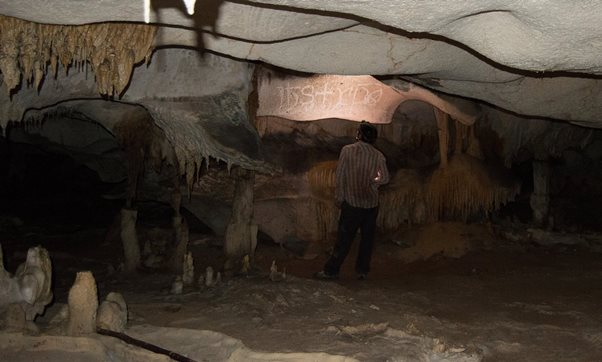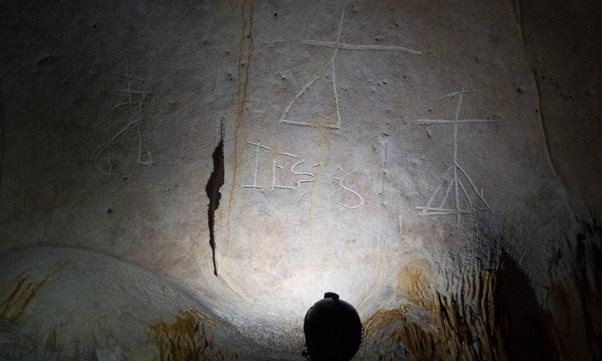Anglo-Puerto Rican team discovers Latin inscriptions and Christograms next to spiritual iconography by indigenous peoples. Early European colonisers of the Americas are generally seen as religious zealots and violent oppressors, but the discovery of a cave on an uninhabited Caribbean island may lead to a rethink.
A team led by the British Museum and the University of Leicester have found evidence of an early religious dialogue between Europeans and Native Americans. In a cave deep inside the remote island of Mona, archaeologists were astonished to discover Latin inscriptions and Christograms next to spiritual iconography left by indigenous peoples.
“It is truly extraordinary,” said Jago Cooper, the British Museum curator who, with the University of Leicester’s Alice Samson, led the research team. “It is proof that the first generation of Europeans were going into caves and being exposed to an indigenous world view. I can’t think of another site like this in the Americas.”
Since 2013, the Anglo-Puerto Rican team team have been exploring about 70 cave systems on the uninhabited island, a place visited and claimed for Spain by Christopher Columbus on his second voyage in 1494.
The island, 40 miles (66km) west of Puerto Rico, is one of the most cavernous regions in the world. Researchers discovered remarkable spiritual iconography made by indigenous peoples deep inside the cave systems, where a lack of natural light means it is possible to draw directly into the cave walls as if it were wet flour.
In one area, they discovered markings which were clearly 16th-century European, including Christograms, letters used as an abbreviation for Jesus Christ, and religious sentences in Latin.
Samson said the marks were made by some of the earliest colonisers to arrive in the Americas. These colonisers would have been taken to the caves, places considered particularly sacred, and were responding with respect to what they saw, engaging in a religious dialogue.
“We have this idea of when the first Europeans came to the New World of them imposing a very rigid Christianity. We know a lot about the inquisition in Mexico and Peru and the burning of libraries and the persecution of indigenous religions.
“What we are seeing in this Caribbean cave is something different. This is not zealous missionaries coming with their burning crosses, they are people engaging with a new spiritual realm and we get individual responses in the cave and it is not automatically erasure, it is engagement.”
Sampson said the research, published on Tuesday in the archaeological journal Antiquity, shone new light on the early colonisers and painted a more nuanced picture.
“This not only provides a counterpoint to official metropolitan histories but also tracks the beginnings of new religious engagements and transforming cultural identities in the Americas.” Article courtesy https://www.theguardian.com




